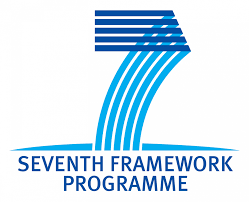REPROSEL
Research Directions:
Population genetics and phylogeography
Description:
 Selective breeding schemes are widely recognized as efficient means to improve aquaculture production. Compared to the individual selection, family-based selection allows a better control of inbreeding and represents the only alternative to improve disease resistance and slaughter traits. However, fish farmers are reluctant to invest in such programs due to the high requirements for space, labour and maintenance. In addition, the sib groups produced may result inadequate when the artificial fertilisation is not fully mastered. This is a limitation for the emergence of breeding programs for multiple-spawning species. However, molecular markers are presented as valid tools to enhance breeding programs, in particular for parentage inference of selection candidates reared in communal tanks. Microsatellite are the mostly used markers and the assignment of progeny is achieved with specific software. But the genotyping costs, combined with the too low assignment rate of progeny to a single parental pair, restrict their use in selection. Relying on mass spawning to implement selective breeding schemes is the challenge this project proposes to tackle. The European seabass and the gilthead seabream are the target species that will be the subject of the following research objectives: understand the spawning kinetics and propose hormonal therapies to develop mass spawning protocols allowing equalised parental contribution; develop highly informative STRs multiplexes and SNPs microchips and optimise an allocation software to maximise the rate of single match at the lower cost; optimise selection models adapted to new mating designs to get the best genetic response while controlling the rate of inbreeding. Based on the projects results, a business plan will be prepared, accompanied by a cost-effectiveness analysis of the proposed strategy. It will result in the reinforcement of existing breeding programs and the emergence of new breeding initiatives.
Selective breeding schemes are widely recognized as efficient means to improve aquaculture production. Compared to the individual selection, family-based selection allows a better control of inbreeding and represents the only alternative to improve disease resistance and slaughter traits. However, fish farmers are reluctant to invest in such programs due to the high requirements for space, labour and maintenance. In addition, the sib groups produced may result inadequate when the artificial fertilisation is not fully mastered. This is a limitation for the emergence of breeding programs for multiple-spawning species. However, molecular markers are presented as valid tools to enhance breeding programs, in particular for parentage inference of selection candidates reared in communal tanks. Microsatellite are the mostly used markers and the assignment of progeny is achieved with specific software. But the genotyping costs, combined with the too low assignment rate of progeny to a single parental pair, restrict their use in selection. Relying on mass spawning to implement selective breeding schemes is the challenge this project proposes to tackle. The European seabass and the gilthead seabream are the target species that will be the subject of the following research objectives: understand the spawning kinetics and propose hormonal therapies to develop mass spawning protocols allowing equalised parental contribution; develop highly informative STRs multiplexes and SNPs microchips and optimise an allocation software to maximise the rate of single match at the lower cost; optimise selection models adapted to new mating designs to get the best genetic response while controlling the rate of inbreeding. Based on the projects results, a business plan will be prepared, accompanied by a cost-effectiveness analysis of the proposed strategy. It will result in the reinforcement of existing breeding programs and the emergence of new breeding initiatives.




